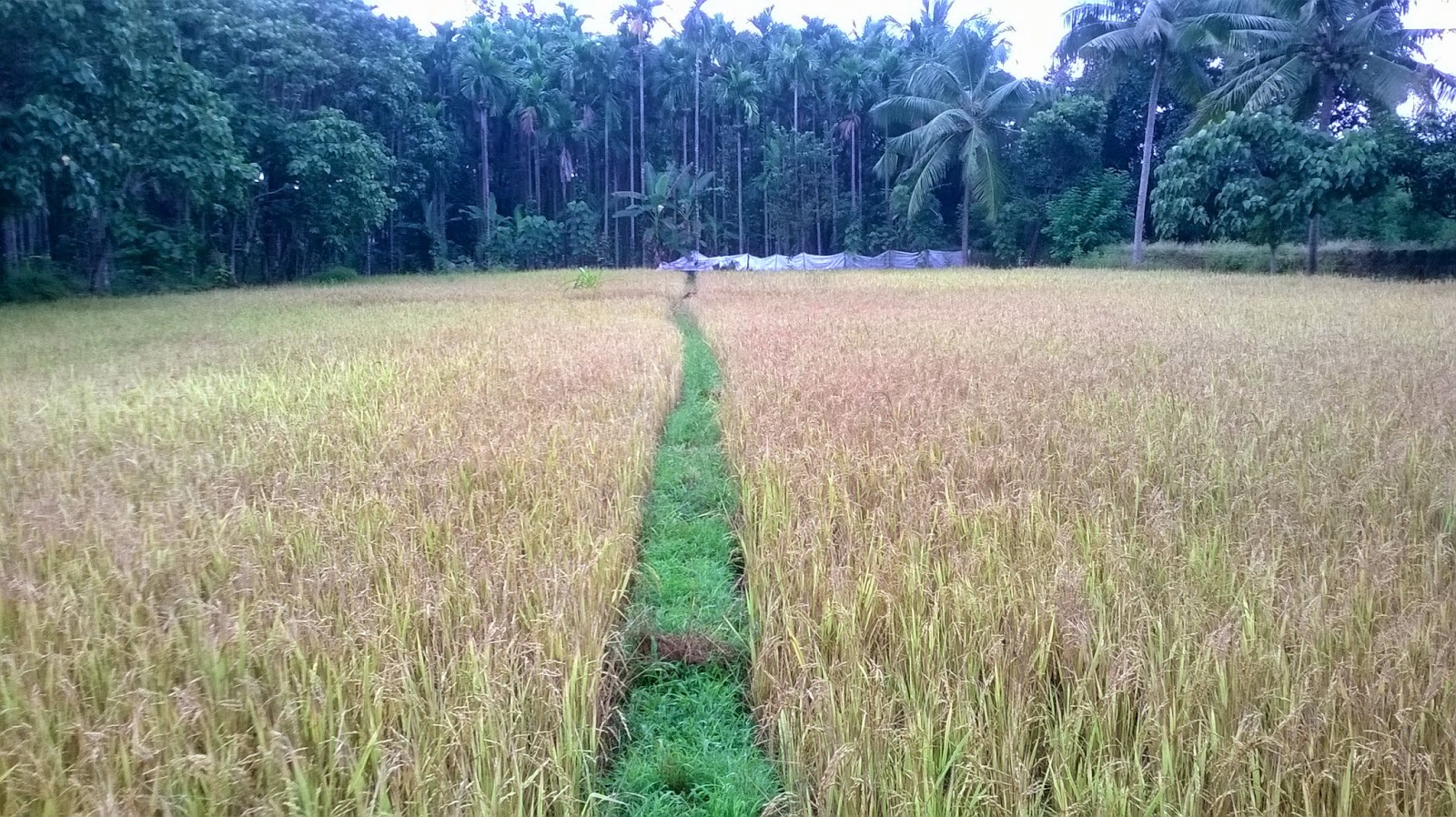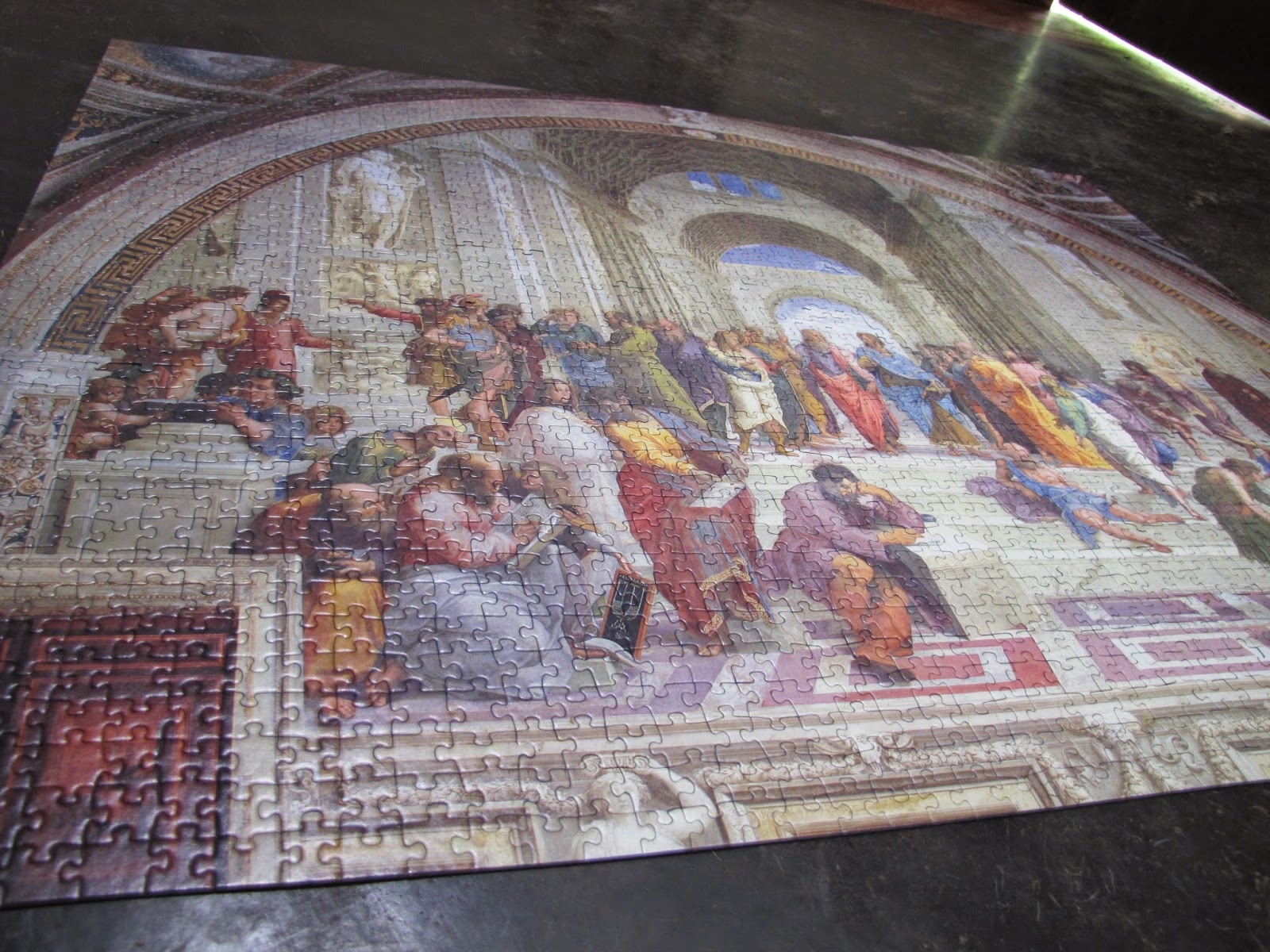 |
| Oh so delicate - the rice panicles |
It is the second week of October now, and the paddy fields are now lush green and heavy with promise.
The slender stalks have put forth delicate looking panicles. Every day the colours change – from lush
green to a pale green and then a golden tinge begins to show in places. Each day the panicles look a little fuller –
the grains are growing safe in the tough husk which protects it.
 |
| Changing Colours - now only the grass on the embankment is green |
But then this protection is just not enough
to protect these fields from the wild boar. O yes, the wild boars from the
adjoining forest are making nocturnal sojourns into all the surrounding fields
and making a merry meal of the tender grains. And along with it a whole lot of
destruction! Surely they could eat their fill standing on the embankment and
chomping only on the grains, could someone teach them some table manners
please? But no, they stamp around, roll
around when their back feels ticklish, and in general ruin a sizable area of the field.
 |
| The boar has been here |
The villagers have all taken to sleeping in
their fields at night, each field has a neat elevated machan in the middle.
Sometimes groups of youngsters pitch in and I guess they party out in the open,
you can hear music and then some fire-crackers and loud hoots. And they
successfully drive the boars away from their fields, right into ours as our
fields are directly in the path back to the forest.
 |
| A machan built in one of the fields |
So now the only solution is for us to sleep in our
fields! And that is exactly what we
did. Since we did not have a machan ready, we decided to use our tent. Our farm-hand Manjunath cleared a
small area of the thorny shrubs and weeds which have grown so abundantly in the
rains, and we pitched our tent in a little circle of Arecanut palms. A thick
blanket on the floor a couple of pillows and blankets as it gets quite chill
during the night, and we were ready. Of our four four-legged companions, we
decided to take Johnny with us as he is not fussy about where he sleeps unlike
Phoenix and Misty who would insist on snuggling into the tent. And Zuki is like
the breeze, you just can’t confine her, she would spend the night wandering
around and cry if she is tied. So Johnny it was
 |
| Johnny can make himself comfortable just about anywhere. |
. We had dinner and armed with a
plate and a ladle and torches, made our way thru the farm to the tent – our
paddy field is beyond our areca plantation. Walking in the thick canopy of the
palms, you suddenly realise how thick the undergrowth is, and not wanting to
risk putting our foot on any unsuspecting snakes, we clanged the plate and
ladle all the way. We tied Johnny to the nearest Areca palm and
got into the tent. It is fully sealed, so we had no worries about mosquitoes,
bugs or even snakes. And it is supposed
to be an all weather tent. But I guess
all-weather does not include Malnad rains!
The brilliant moonlight soon got obscured by a thick cloud cover and
soon there was a good drizzle..... gentle to begin with and then heavier by the
minute. And it continued the whole night long. we started getting a gentle
misty spray of rain into the tent as well. This was rather unexpected and we
had no umbrellas even if we wanted to walk back home. So we slumbered through
it, lulled by the musical sounds of the night.
The moon glistens,
a silver sheen,
the breeze ripples,
rustles and sings,
an arecanut falls,
with a resounding plop,
And the tent is drenched,
drop by drop!
The moon glistens,
a silver sheen,
the breeze ripples,
rustles and sings,
an arecanut falls,
with a resounding plop,
And the tent is drenched,
drop by drop!
Johnny did not seem to mind the rain at all and slept curled up. A couple of times we awoke to his low, deep warning growl and sure enough we could hear the heavy footsteps – we clanged the plate loud and long and the boar moved on. It was indeed a good thing that we brought Johnny along.









































